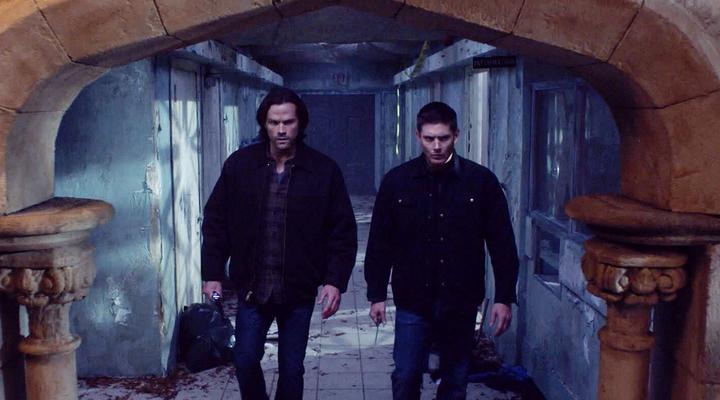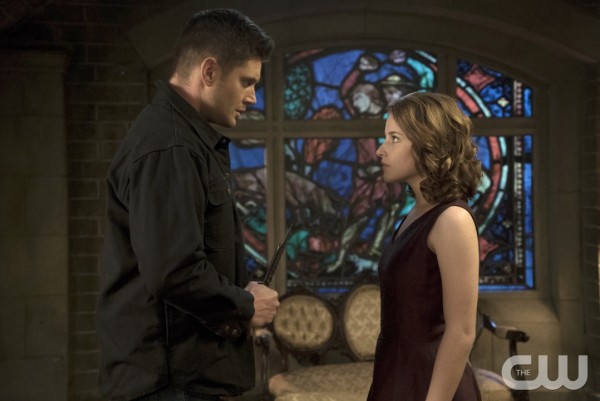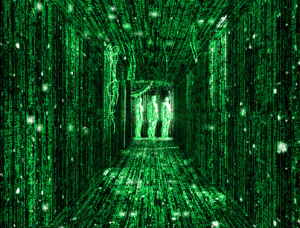What he did? Creation? That took work. That took sacrifice.
— Metatron
I’ve been suspecting for a long time that the universe of Supernatural is a Manichaean one, and, in Wednesday’s “Our Little World,” we finally get that crystal-clear confirmation. Metatron says that Amara is God’s sister, one of God’s kin, with all of God’s powers and God’s abilities. Amara is the Darkness to God’s Light. Metatron, in his monologue, notes that she’s always been The Darkness, that what God did to Amara didn’t turn her from light to dark, but just lock away what she’d always been.
So, basically, all creation is a massive squabble over who gets to play with the best toys.
 Dean is wearing his broody eyebrows today.
Dean is wearing his broody eyebrows today.
I’ve always maintained that the moment God shows up on Supernatural, the show will take a hard right turn and head on towards a violent denouement. I believe that Big Good versus Big Bad — represented by the lives and the proclivities of our protagonists, the Winchester siblings — has pretty much always been the eventual endgame here. Fans have their theories (hi, Chuck!), but it’s now fairly clear that we’re going to see God before the curtain calls. Once you bring out that final narrative card, there’s nothing left in the deck.
Biblical theory and the show itself would have you believe the final conflict to be between a returning God and locked-away Lucifer. In a Manichaean world, though you need more than a creation of a deity struggling against that deity; you need something as powerful as the deity itself, a quid-pro-quo, a balance, a shadow for every lamp.
 Dean aligning visually with The Darkness. Not a good sign.
Dean aligning visually with The Darkness. Not a good sign.
I think it is very fitting that Supernatural frames its final conflict through the lens of intersibling family drama. “Our Little World,” and indeed, the season itself, also sets up that same Manichaean internal conflicts between Dean and Sam. Sam has been encouraging Dean to stop killing for a while now, and consistently lets even demons live when he can; Dean, despite his brother’s backing, is still automatically setting his dial to “slaughter.”
Metatron’s monologue for Castiel raises more questions for viewers than it answers. The fact that God need to put Amara to “sacrifice” in order to achieve his Creation means something else: in Supernatural, God has rules of nature to obey as well. Is there a family of Gods? Does God have a mother? A kindergarten teacher? A nosy neighbor? Does God’s nosy neighbor have a Creation of his own, too? Is the ending literally going to be a deus ex machina? How far can this go before we jump the shark?
The last few moments of “Our Little World” show Amara pretty much owning Crowley and sending him, an impotent little shouting creature, back to Hell. Where do the only-human Winchesters fit here, when there are so many tidal waves about to hit the shore?
In Supernatural, God has been “away” for a very long time. He’s hands off. He’s doing something else. He’s a babysitter who has gone out to have a smoke and left the kids to wreck the place. And wreck it they have — even the angels are acting like they belong in the burning halls below.
I believe that is about to change.














